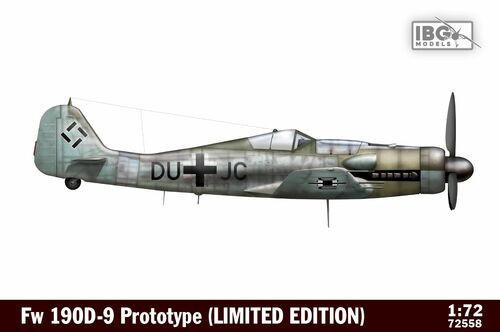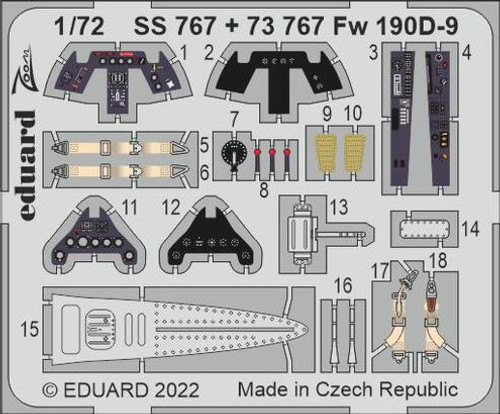Description
Fw 190D was the final mass-produced version of the ‘golden child’ of Focke-Wulf company, that lived to see many variants differing in armament and engines used.
Although the version of Fw 190 equipped with an inline engine is often considered to be a late-war design, its history in fact dates back to earlier years and follows a natural direction of the machine’s development. As early as 1941 it was obvious that German fighters would have to contend with Allied bombers equipped with turbocharged engines capable of sustaining high power at altitudes exceeding 6000m. Focke-Wulf realized that the Allies were rapidly gaining the technical advantage and began courting the Air Ministry for a contract to develop versions that would sustain their combat characteristics at higher altitudes. Work soon began on developing fighters equipped with turbocharger. Initial trials with a radial engine (Fw 190B) were not promising and the attention of designers focused on inline engines (Fw 190C with DB603 engine). Despite extensive development programs, both versions were plagued by technical problems resulting from severely underdeveloped systems. Eventually they did not meet with the RLM enthusiasm, remaining only in prototype stages. In the end, advances in the development of the Junkers Jumo 213 engine gave hopes for a fighter that could at last match the more advanced designs of the enemy.
First prototype with the new engine was built in September 1942. It was a simple adaptation of the radial-engined machine – a complete inverted-V inline powerplant was fitted to the existing airframe. Flight tests showed that the new engine shifted the center of gravity too much forward, causing the aircraft to be unstable in flight. Focke-Wulf design team solved the problem paying attention to minimizing the changes required to the airframe. To compensate for the shifted center of gravity, the tail was lengthened by inserting a new section in the fuselage just in front of the tailplane. Increased engine power also required corrections to the longitudinal stability of the machine. It was achieved by inserting simple elements increasing area of the vertical stabilizer. Further tests of prototypes in the new configuration took two more years, and after dealing with teething problems and rejecting the unsatisfactory D-0, D-1 and D-2 configurations, the fighter equipped with the series-produced Jumo 213A engine with a single-stage, two-speed mechanical supercharger was put into series production in August 1944 as the D-9 version. Thus the legend was born.
Near the end of war, the evolution of inline engines powering the Fw 190D accelerated and their intensive development resulted in successive subtypes of the aircraft. Variants D-10, D-12 and D-14 remained prototypes, but for D-11 and D-13 series production was started. They were equipped with a more powerful version of the Jumo 213F engine with a two-stage three-speed mechanical supercharger. The last variant to be developed was D-15, powered by the finally refined DB603 engine. A prototype version of the D-15 was built and flown just before the end of war, using a standard, series machine as a basis for conversion. The end of war ended the preparation of the new variant still at the stage of development, and the production was not started.
It is estimated that 1500 to 1700 machines of the D version were produced in all factories and production branches. Out of that about 900 were taken over by the Luftwaffe, but because of the chaotic situation in the last months of war still fewer of them were actually delivered to the combat units.


















